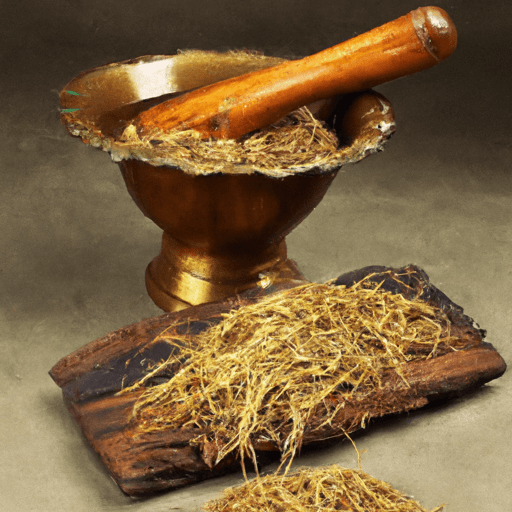Unveiling the Tangy Delight: Amchur
Have you ever encountered a tangy and zesty ingredient that elevates the flavors of your dishes? Look no further than amchur! With its unique taste and versatility in the kitchen, amchur is a hidden gem in the vast array of spices and seasonings. In this blog post, we’ll explore the intriguing world of amchur, diving into its taste, common uses, nutritional value, and fascinating history and facts.
Taste that packs a punch
Amchur, also known as mango powder, is derived from unripe green mangoes and originates from the Indian subcontinent. This pale yellow powder encapsulates a pleasantly tangy and slightly sweet flavor that can leave a lasting impression on even the most discerning palates. Often described as fruity, sour, and reminiscent of dried apricots, amchur adds a delightful zing to dishes that can transform an ordinary meal into a culinary masterpiece.
Versatile and indispensable
With its distinct flavor profile, amchur finds its place in a wide range of Indian, Southeast Asian, and Middle Eastern cuisines. Its versatility allows it to be used in both savory and sweet dishes, providing a dash of acidity and a hint of tropical sweetness.
In savory cooking, amchur is commonly used as a souring agent in chutneys, pickles, and marinades. It also acts as a natural tenderizer in meat and vegetable dishes. For instance, a sprinkle of amchur in vegetable curries or kebabs can enhance the overall taste and bring an appetizing aroma. Additionally, it works wonders when added to spice blends, creating an intriguing balance of flavors in dishes such as chaat, masalas, and rubs.
On the sweeter side, amchur can be blended with sugar or jaggery to create refreshing drinks, syrups, or desserts. The tangy sweetness of amchur perfectly complements traditional treats like mango kulfi, a creamy frozen dessert, or aam panna, a refreshing summer drink.
Nutritional value and health benefits
Apart from its delightful taste, amchur also offers some nutritional benefits. It is a rich source of vitamin C, antioxidants, and essential minerals like iron and potassium. Incorporating amchur into your diet can help boost your immune system, improve digestion, and promote overall well-being. Just remember, as with all spices, moderation is key.
A glimpse into the past
The history of amchur traces back to ancient times when unripe mangoes were carefully dried and ground to create this unique spice. It was initially used as a substitute for tamarind, a popular souring agent. Over time, amchur gained recognition as a spice in its own right and became an integral part of Indian cuisine. Today, it continues to be an essential ingredient in various regional specialties, showcasing the rich culinary heritage of the Indian subcontinent.
Fascinating facts about amchur
- Amchur powder is made by drying and grinding unripe green mangoes, which are harvested specifically for this purpose.
- Amchur is an excellent meat tenderizer, allowing for more flavorful and succulent dishes.
- The use of amchur in traditional Indian cuisine dates back thousands of years, making it a spice with a rich culinary legacy.
- It is believed that Alexander the Great enjoyed a taste of mangoes during his conquests in the Indian subcontinent.
- In Ayurveda, amchur powder has been used for its digestive and cooling properties.
In conclusion, amchur is a true culinary treasure that adds a tangy touch to countless dishes. Its ability to enhance flavors and create depth in both savory and sweet recipes is a testament to its versatility. Whether you’re exploring Indian street food or experimenting with international cuisines, amchur is a spice worth keeping on your kitchen shelf. So, why not embark on a culinary adventure and give this delightful powder a try? Your taste buds will thank you!
Amchur
Origin: Amchur, also known as mango powder, is a spice commonly used in Indian cuisine. It originates from South Asia, particularly India and Pakistan. It is made from green, unripe mangoes, which are dried and ground into a fine powder.
Common Uses: Amchur is widely used as a souring agent and flavor enhancer in various dishes. Its tangy and slightly sweet flavor profiles make it a popular ingredient in chutneys, pickles, curries, and marinades. It is also used in beverages, soups, and snacks for its unique taste.
Nutritional Benefits: Amchur is relatively low in calories and fat. It is a good source of vitamin C, providing a significant amount of this essential nutrient. It also contains small amounts of other vitamins and minerals, including vitamin A, vitamin E, and iron.
Unique Properties: One of the unique properties of amchur is its ability to add a tart and tangy flavor to dishes without adding moisture. This makes it a versatile ingredient, especially in recipes where adding extra liquid is undesirable. Additionally, amchur has a natural tenderizing effect on meat due to its acidity, making it a popular choice as a meat marinade.
Historical Significance: Amchur has been used in Indian cuisine for centuries. Its use can be traced back to ancient times, where it was used as a souring agent before lemons and tamarind became widely available. The preservation of green mangoes by drying and grinding them into powder allowed for the year-round availability of this flavoring agent. Today, amchur continues to play a significant role in traditional Indian cooking.




Use the share button below if you liked it.
It makes me smile, when I see it.